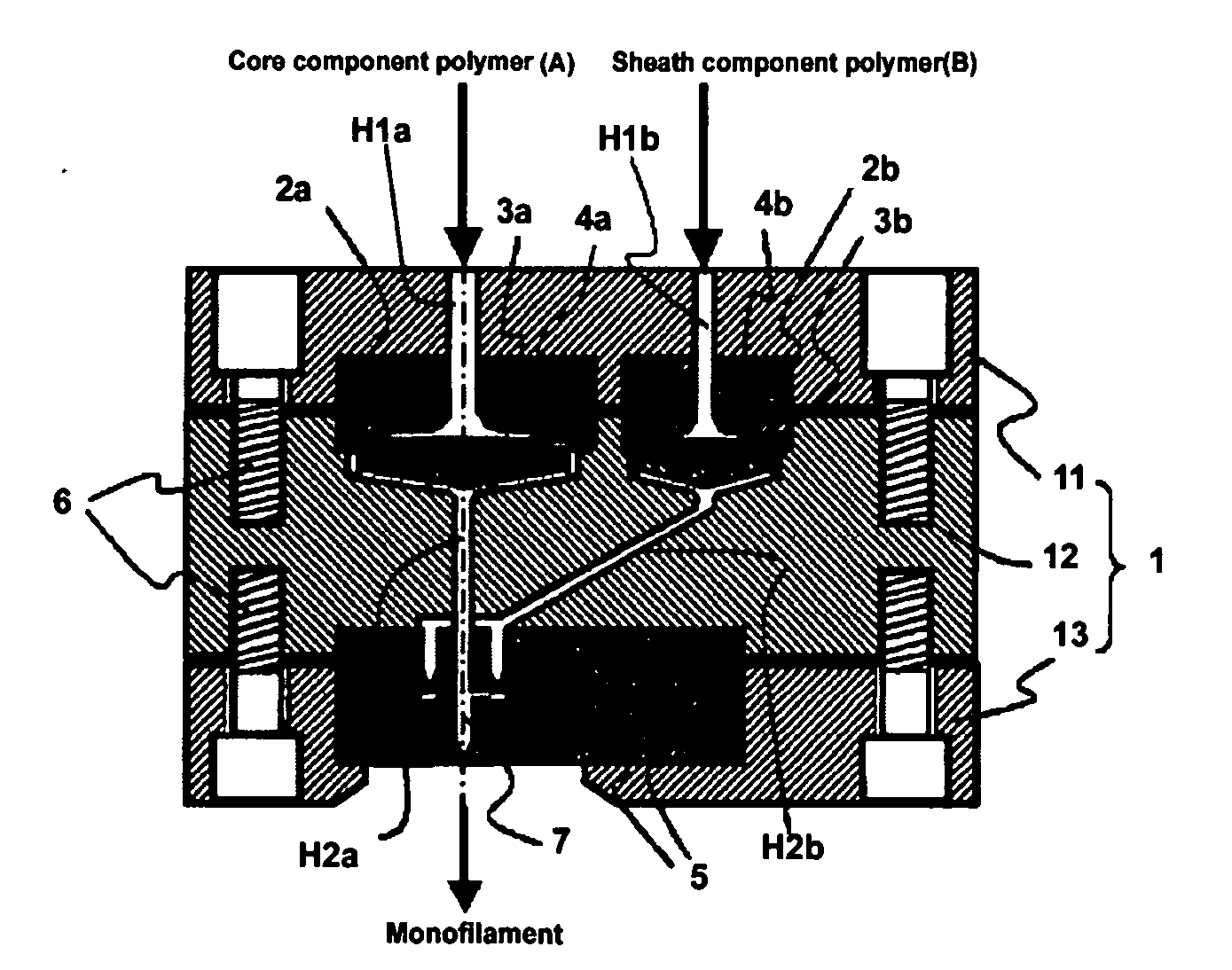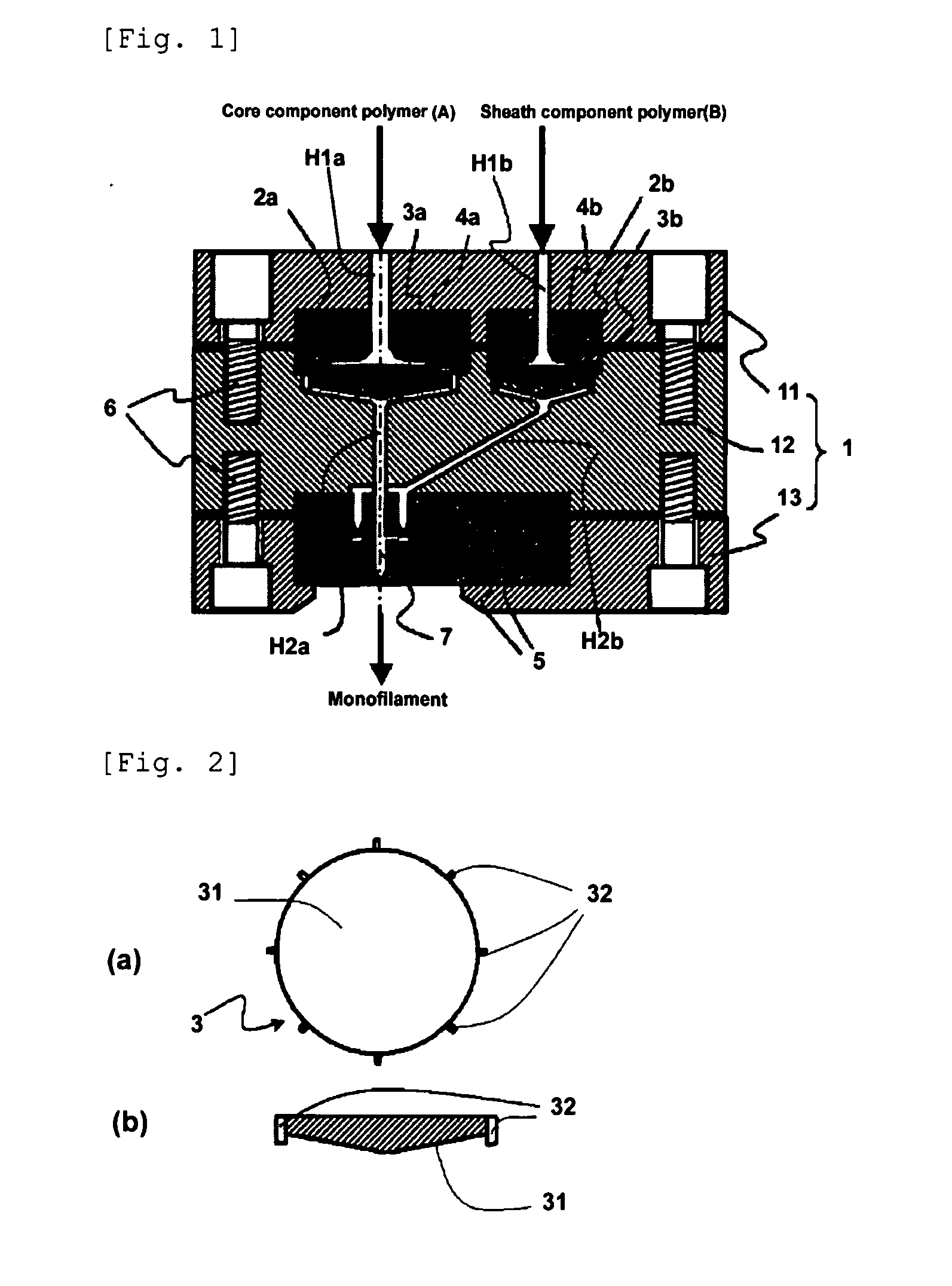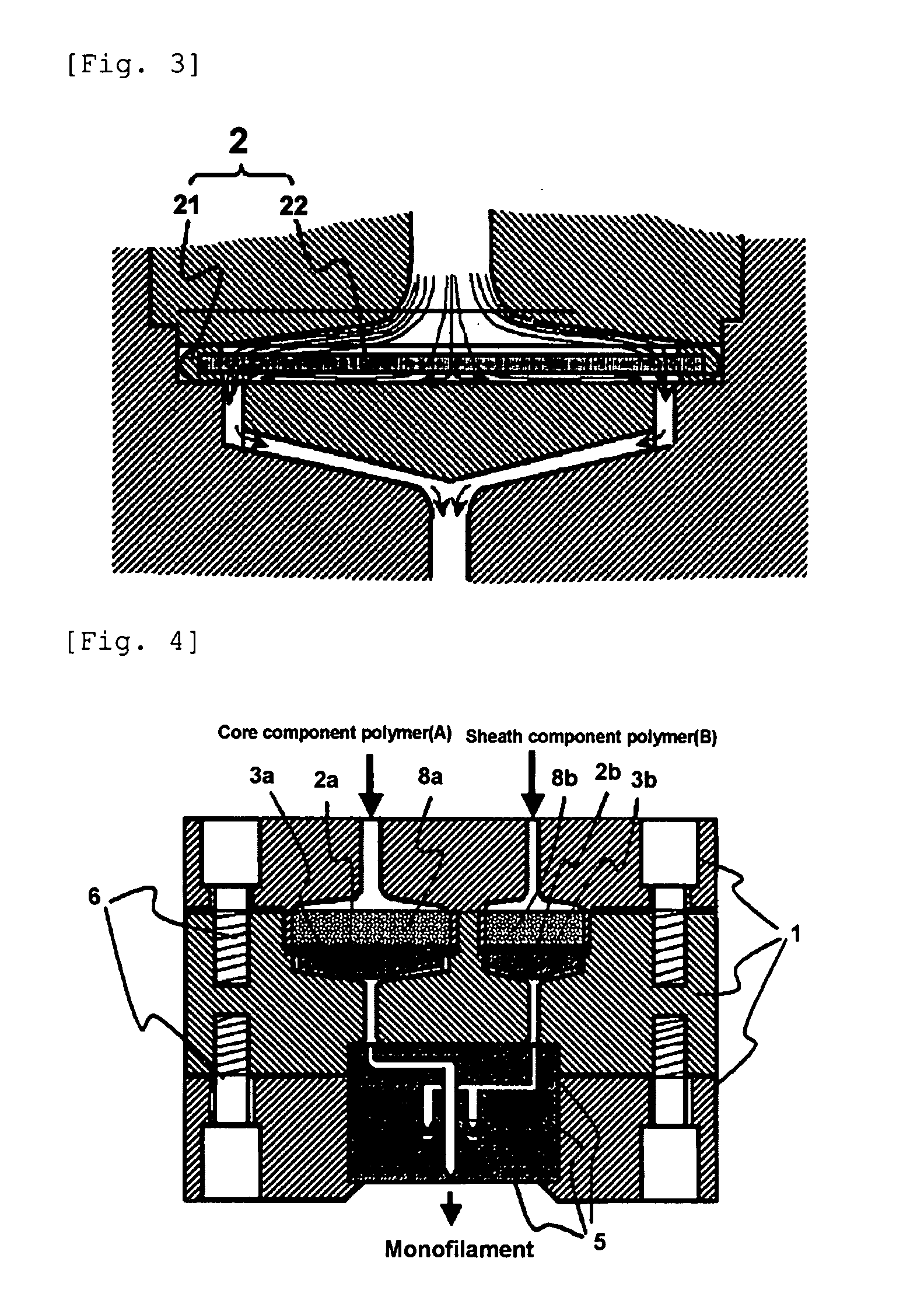(Dope-Dyed) Polyester Monofilament
a polyester monofilament and polyester monofilament technology, applied in the field of dopedyed polyester monofilament, can solve the problems of increasing the degree of integration, and increasing the number of raw filaments that are subject to repeated friction, and achieving excellent dimensional stability, inhibiting filament scraping, and preventing pirn contraction
- Summary
- Abstract
- Description
- Claims
- Application Information
AI Technical Summary
Benefits of technology
Problems solved by technology
Method used
Image
Examples
example 1
[0149]Polyethylene terephthalate containing 0.35% by weight of titanium oxide and having an intrinsic viscosity of 0.85 dL / g as a core component and polyethylene terephthalate having an intrinsic viscosity of 0.63 dL / g as a sheath component were each independently melted under a temperature of 295° C., and metered so as to give a core-sheath composite ratio of 60 / 40 by weight. At this time, the intrinsic viscosity of the discharged core component polymer sampled after 2 hours from the initiation of discharge was 0.73 dL / g, and that of the discharged sheath component polymer was 0.57 dL / g. Using a pack and a spinneret as shown in FIG. 1, the polymers were joined together and combined, and extruded from the same extrusion orifice, at a spinning temperature of 295° C. Just under the spinneret, a 90-mm long heater was installed so as to adjust the atmosphere temperature to about 350° C. After the extruded filament passed through a 1,000-mm long cold air zone, it was coated with a spinni...
example 2
[0151]A drawn filament was obtained in the same manner as in Example 1 with the exception that the intrinsic viscosity of polyethylene terephthalate used as the core component was changed to 0.9 dL / g. The intrinsic viscosity of the core component collected at an inlet of the pack in the same manner as in Example 1 was 0.8 dL / g. The quality level was similar to Example 1 except the 5% LASE was somewhat improved, and there was no particular problem. Such an increase in intrinsic viscosity is liable to cause melting unevenness. In that case, there is a fear of the occurrence of slubs. When slubs occur, a countermeasure such as the installation of a dynamic kneading unit in melting equipment is necessary.
example 3
[0152]A drawn filament was obtained in the same manner as in Example 1 with the exception that the intrinsic viscosity of polyethylene terephthalate used as the sheath component was changed to 0.6 dL / g. The intrinsic viscosity of the sheath component collected at an inlet of the pack in the same manner as in Example 1 was 0.55 dL / g. The difference in both the physical properties and the quality level was scarcely observed, compared to Example 1, and it was confirmed that changes in characteristics at this level were in the range of error.
PUM
| Property | Measurement | Unit |
|---|---|---|
| breaking elongation | aaaaa | aaaaa |
| breaking elongation | aaaaa | aaaaa |
| degree of free shrinkage | aaaaa | aaaaa |
Abstract
Description
Claims
Application Information
 Login to View More
Login to View More - R&D
- Intellectual Property
- Life Sciences
- Materials
- Tech Scout
- Unparalleled Data Quality
- Higher Quality Content
- 60% Fewer Hallucinations
Browse by: Latest US Patents, China's latest patents, Technical Efficacy Thesaurus, Application Domain, Technology Topic, Popular Technical Reports.
© 2025 PatSnap. All rights reserved.Legal|Privacy policy|Modern Slavery Act Transparency Statement|Sitemap|About US| Contact US: help@patsnap.com



